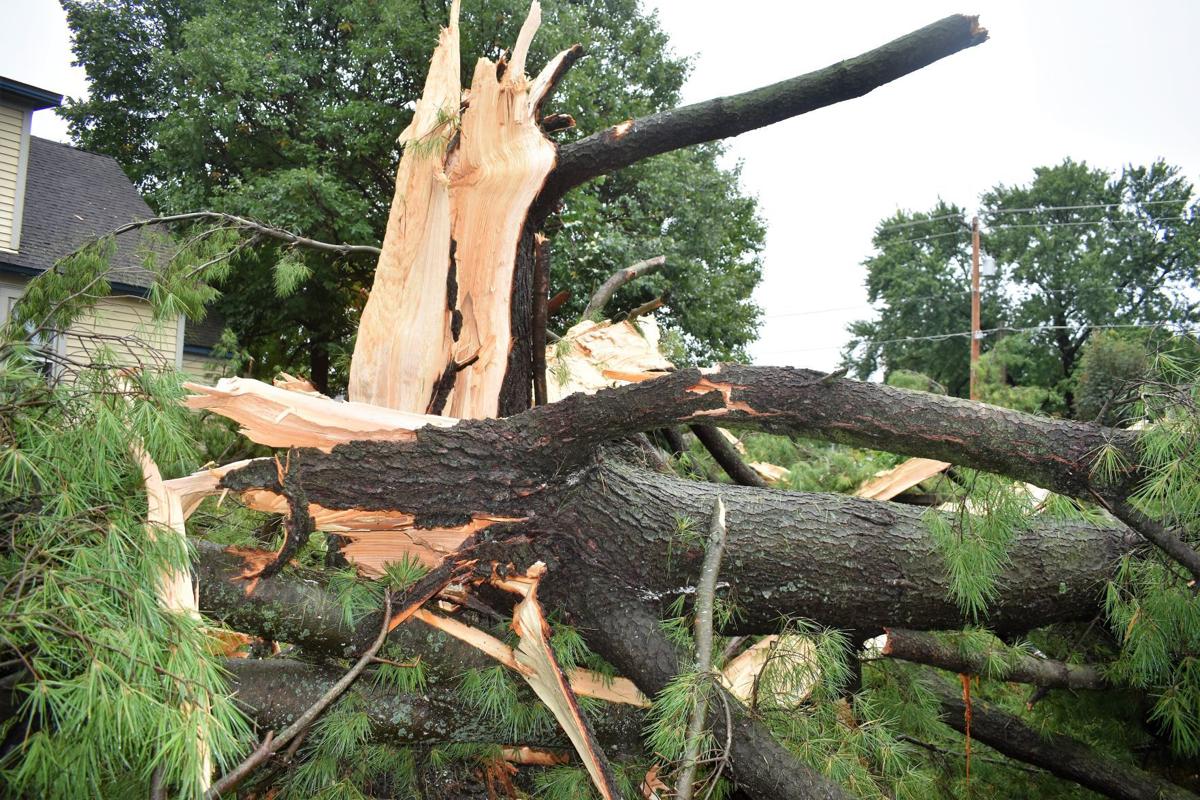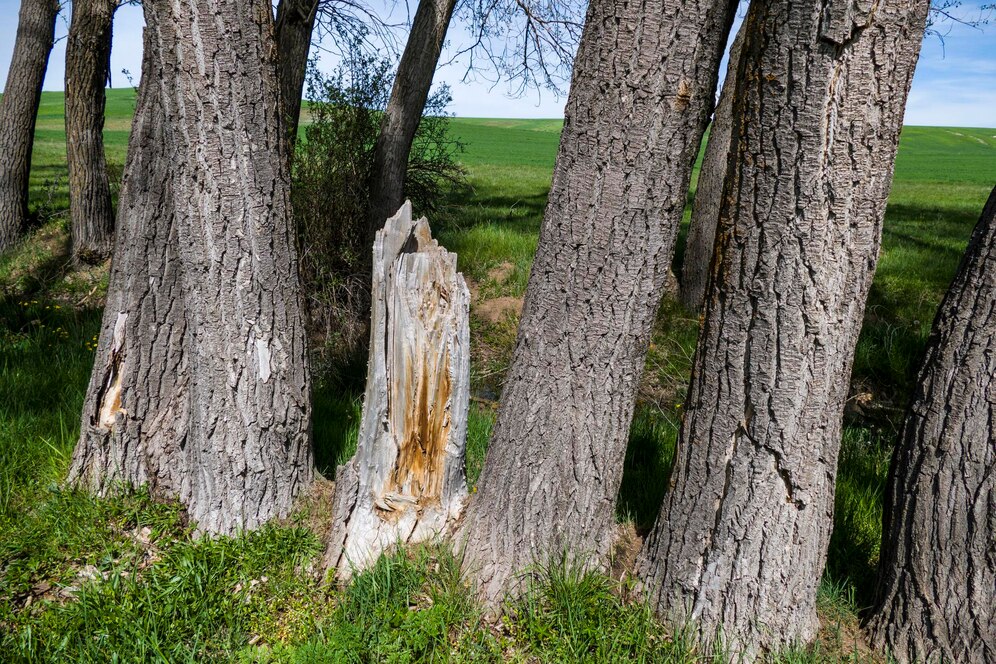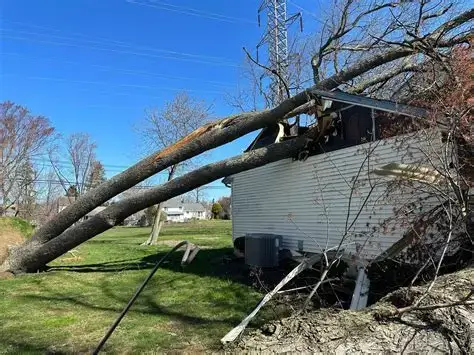Is Tree Removal Covered by Homeowners Insurance in NJ? Here’s the Truth
Yes, homeowners insurance can cover tree removal, but only in certain situations—mainly when the tree causes damage to your home or blocks access to essential areas like your driveway. In New Jersey, where storms, wind damage, and heavy snow are common, it’s a question many homeowners ask. The key? It depends on how and why the tree came down, and what type of coverage your policy includes.
When Does Insurance Cover Tree Removal?
Insurance generally helps when a tree damages your home, garage, fence, or other covered structures. If a massive oak falls during a Nor’easter and cracks your roof, your policy likely steps in. Same goes if a tree blocks your main driveway or emergency exit path. But if a healthy tree simply tips over in your yard without hitting anything? Most policies won’t pay a dime.
Covered Scenarios (With Real Examples from NJ)
Homeowners insurance policies don’t cover every tree-related situation, but when it comes to sudden, unexpected events, you’re often protected—especially in storm-prone areas of New Jersey. These events are generally considered “Acts of God,” meaning they’re outside your control and caused by nature, not neglect. But what exactly counts? Let’s break it down with practical examples from local scenarios.
Storm Damage (Nor’easters, Thunderstorms, Hurricanes)
A violent storm blows through Hunterdon County, bringing 50+ mph winds. A healthy maple tree in your backyard is ripped from the roots and crashes into your covered porch.
Covered.
The structure is damaged by the falling tree—your dwelling coverage pays for the repairs and part of the tree removal (usually up to $1,000 per tree).
Lightning Strike Causes Tree Collapse

During a summer lightning storm in Bridgewater, NJ, a bolt hits a tall spruce in your front yard. The tree cracks in half and falls onto your electric line and outdoor A/C unit.
Covered.
Because lightning is a named peril in almost every standard homeowners policy, and the damage involves essential systems, the insurer typically covers both repairs and tree removal.
Pro Tip: Keep documentation like weather alerts and service provider reports—it helps speed up claims.
Wind or Snow Load in Northern NJ
In Warren County, a winter snowstorm dumps a foot of snow overnight. The weight causes an older pine tree to snap and land on your backyard shed, smashing the roof and part of your fence.
Covered.
The tree damaged two covered structures, so both may be eligible under dwelling and other structures coverage. Snow or ice buildup leading to tree failure often qualifies—especially if the tree was alive and healthy before.
Tree Crushes a Carport or Garage
An intense wind gust during a fall storm in Flemington knocks a large oak onto your detached garage. The structure is crushed, and a parked vehicle is damaged inside.
Covered (Partially).
The garage, as a detached structure, falls under “Other Structures” in most homeowners policies. The car may be covered only if you have comprehensive auto insurance—your home policy won’t cover vehicle damage.
Important Clarification: Always split the claim correctly—homeowners insurance for the garage, auto insurance for the car.
What These Have in Common
All these situations share three important characteristics:
Sudden & Accidental – not something gradual like rot or neglect
Insured Peril – caused by a weather event or disaster named in your policy
Structure Damage – the tree must cause damage or block essential access
Local Insight:
Many towns in New Jersey—like Lambertville, Clinton, and Phillipsburg—have experienced increasing storm-related claims in recent years due to higher winds and saturated soil. If you’re in a storm-prone zone or near a large tree canopy, insurers recommend routine inspections to minimize risk—but if nature takes its course, your coverage is likely to step in.
What’s Not Covered Under Homeowners Insurance?
This is where many homeowners get blindsided. Just because a tree falls doesn’t mean your insurance company will rush to write a check. In fact, most standard homeowners policies draw a hard line between damage caused by a tree and the cost of removing a tree that didn’t damage anything.
Let’s unpack the most common situations that don’t qualify for coverage, especially under policies in New Jersey.
Dead or Dying Trees Removed as a Precaution
Let’s say there’s a rotting tree leaning dangerously close to your home in Lebanon, NJ. You’ve been meaning to cut it down for months but never got around to it. Then, a storm comes through, and you decide to finally remove it before it falls.
Not covered.
Insurance companies expect homeowners to handle preventive maintenance on their property. Removing a tree to avoid future damage is seen as routine upkeep, not an insurable loss.
“Home insurance doesn’t pay for yard work—it pays for damage.”
—Common line from NJ adjusters
Tree Falls Without Damaging a Covered Structure
During a windy afternoon in Tewksbury, a healthy tree falls in your yard. It misses your house, shed, fence, and driveway. It’s just lying across your lawn, intact.
Not covered.
Because there was no damage to an insured structure and no blockage of critical access (like a driveway or handicap ramp), your insurance won’t help with the removal.
This is one of the most misunderstood parts of a policy—people assume a fallen tree equals a payout. It doesn’t unless there’s damage involved.
Tip: Some insurers make rare exceptions if the tree blocks emergency access or poses an imminent hazard.
Yard Cleanup or Debris Removal
Let’s say a storm sweeps through Clinton Township, leaving your yard littered with small limbs, pinecones, and branches from your trees. Nothing broke, no damage was done—but the mess is everywhere.
Not covered.
General debris cleanup, even from a storm, isn’t usually covered unless it’s tied to a claimable loss (e.g., cleaning up after a tree crushed your garage).
Homeowners are responsible for keeping up with landscape maintenance—even if Mother Nature does the pruning.
Damage Caused by Neglected Trees

Imagine a situation where your neighbor told you months ago that one of your trees was visibly decaying. You didn’t act. One rainy night, the trunk snaps and crashes onto your neighbor’s shed.
Not covered—and now you’re liable.
If it’s proven that you knew the tree was a hazard and did nothing, your own liability coverage may not apply—and you could be held financially responsible.
This applies to your own property too. If you ignore signs like fungus growth, hollow limbs, or root damage, your insurer may rule the event as homeowner negligence.
“Failure to maintain” is the phrase most insurers will use when denying the claim.
Real NJ Example
In 2022, a homeowner in Somerset County had a large oak collapse after a light rainstorm. The tree had visible rot and hollowing, and neighbors had complained about it leaning.
When it destroyed a section of fence and cracked their patio, the insurer denied the claim citing homeowner negligence. The entire removal and repair cost—over $8,000—was out of pocket.
How Much Will Insurance Pay for Tree Removal?
Even when your insurance does cover a fallen tree, it doesn’t mean they’ll foot the entire bill. Most homeowners are surprised to learn there are strict dollar limits, per-tree caps, and deductibles that chip away at the payout. Let’s break down what to expect in real terms, especially for New Jersey homeowners.
Typical Tree Removal Coverage Limits
Most standard homeowners insurance policies (like those from Allstate, NJM, State Farm, and USAA) will cover tree removal only if the tree damages a covered structure or blocks critical access like a driveway or wheelchair ramp.
Here’s what that usually looks like:
| Scenario | Coverage Limit |
|---|---|
| Tree damages home, garage, fence | $500 to $1,000 per tree |
| Multiple trees damaged in a storm | Up to $1,500 total |
| Tree falls but causes no damage | $0 |
| Tree blocks driveway/access | Usually $500–$1,000 max |
These numbers may vary depending on your policy, insurer, and whether you’ve opted for endorsements or add-ons.
Example: Real Breakdown from a NJ Claim
Let’s say you live in Raritan, NJ, and a windstorm knocks a tree into your garage:
Tree removal service charges: $1,200
Garage repair estimate: $5,000
Policy pays:
$1,000 for tree removal (max limit per tree)
$4,000 for repairs after applying your $1,000 deductible
Even though the tree removal cost was higher, your payout for that part will be capped. You’ll have to pay the rest yourself.
What Factors Affect the Payout?
Your Deductible
If your deductible is $1,000, and total damages are $1,500, you’ll only get $500. If the damage is less than your deductible, you get nothing.The Cause of the Tree Fall
Only covered perils apply. Covered causes usually include:Windstorm
Lightning
Fire
Snow/ice buildup
Vandalism (rare but possible)
Not covered causes:
Tree rot or disease
Neglected maintenance
Gradual leaning
Number of Trees Involved
Policies often limit total payout across multiple trees. So if you lose 3 trees in one event, you might only get up to $1,500 total—not $1,000 per tree.What Was Damaged
Tree must strike something insured: house, fence, garage, shed, or even a deck. If it hits an above-ground pool or landscaping features, those may be excluded.
NJ Insight
Some New Jersey homeowners add “Debris Removal Endorsements” to their homeowners policies. This can bump up coverage from $1,000 to $5,000 or more—but only if you pay for the upgrade.
Also, storm-prone areas in NJ (like Blairstown or Mount Olive) may qualify for different risk ratings. That could affect both your premium and your tree-related coverage limits.
What You’ll Need to Get Paid
To receive tree removal reimbursement, insurers usually ask for:
Photos of the damage
A written estimate or invoice from a licensed tree service
Proof the damage occurred from a covered peril
Possibly, an ISA-certified arborist report if negligence is in question
Signed claim form and loss notice
Tip: Companies like Midstate Trees can provide this documentation for you, making the claims process much smoother.
What to Do Right After Tree Damage

Take clear photos/videos of the damage
Prevent further issues (cover exposed roof, shut off electric if needed)
Call your insurance agent to report the loss
Hire a certified tree service for a removal estimate
Save all receipts and communication
Insurers like Allstate and NJM may send out an adjuster within days. Having everything ready speeds up the claim.
How the NJ Tree Removal Insurance Claim Process Works
Step 1: Contact your provider and report the damage
Step 2: Share documentation and service quotes
Step 3: Schedule an adjuster visit
Step 4: Receive approval and payout (or partial payment)
NJ homeowners often run into delays due to backlogged adjusters during storm season. Using a licensed NJ tree company can reduce headaches.
If It’s Your Neighbor’s Tree—Who Pays?
This one confuses a lot of people. In most cases, if your neighbor’s tree crashes onto your home, your insurance pays for the repairs—unless you can prove their negligence, like ignoring a diseased tree.
You file a claim with your own insurer first
If negligence is proven, their liability insurance may reimburse your insurer
Fence damage between properties? You might have to split the claim
How to Avoid Insurance Claim Denials
You can’t control the weather, but you can control tree health. A few steps go a long way:
Trim overgrown branches
Remove visibly rotting or leaning trees
Hire a professional for routine inspections
Keep records of all maintenance
These actions show responsible ownership—something insurers appreciate when reviewing claims.
Do All Insurance Companies Handle Tree Removal the Same?
Not even close. Every insurer has their quirks. Here’s how some NJ carriers compare:
Allstate: Covers tree removal if it hits a covered structure
NJM: Slightly stricter on what qualifies, but solid customer support
USAA: Often more generous, especially for military families
State Farm: Covers driveway blockage in most cases
Policy language varies, so read the fine print or call your agent.
NJ-Specific Rules and Considerations
In New Jersey, some towns require permits before removing certain trees—even if they’re storm-damaged. And in federally declared disaster zones, FEMA may help with removal costs beyond your policy.
Also, in counties like Somerset or Morris, stricter local rules can apply, especially in historic zones or near wetlands.
Why Use a Licensed Tree Company for Insurance Claims?
Insurance companies want legit paperwork. A licensed tree service:
Provides detailed estimates
Helps you avoid “unauthorized work” denials
Can write formal risk reports for adjusters
Speeds up processing
Plus, they know how to safely handle trees on unstable or damaged property—especially after a major storm.
FAQs – Homeowners Insurance & Tree Removal in NJ
Will insurance cover tree removal after a storm?
Yes, if it caused damage to your property or blocked essential access.
What if no structure was damaged?
Usually not covered unless it blocks a driveway or poses a hazard.
Do I pay upfront and get reimbursed?
In most cases, yes. Keep every receipt.
What if I ignored a clearly dangerous tree?
That may count as negligence, and your claim could be denied.
Does insurance pay for tree root damage?
Not typically—most policies exclude gradual damage like roots cracking a driveway.
Final Thoughts on Tree Removal Coverage Limits
Insurance can help you financially when a tree takes a bad fall—but only up to a point. Knowing your per-tree cap, your deductible, and your policy exclusions ahead of time can save a ton of stress when storms hit.

